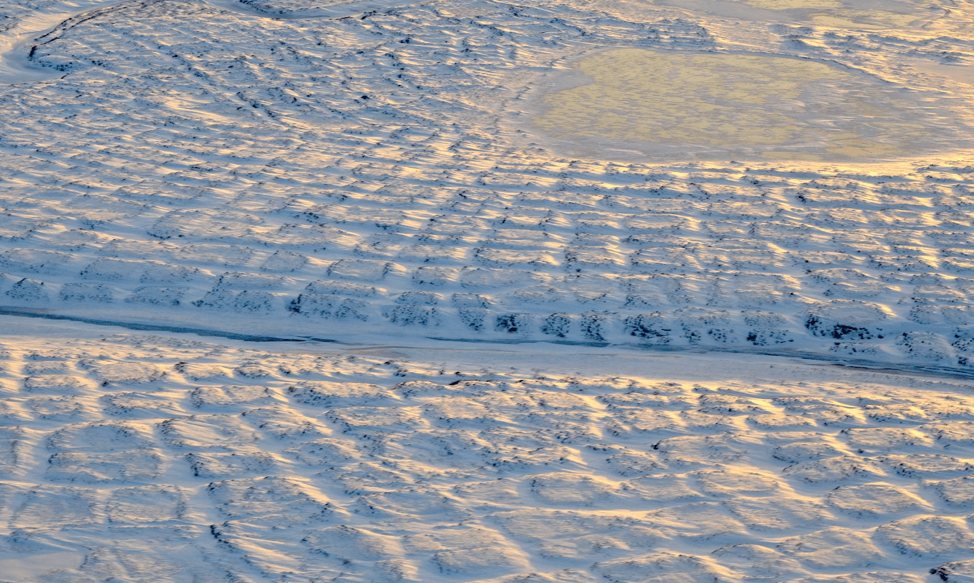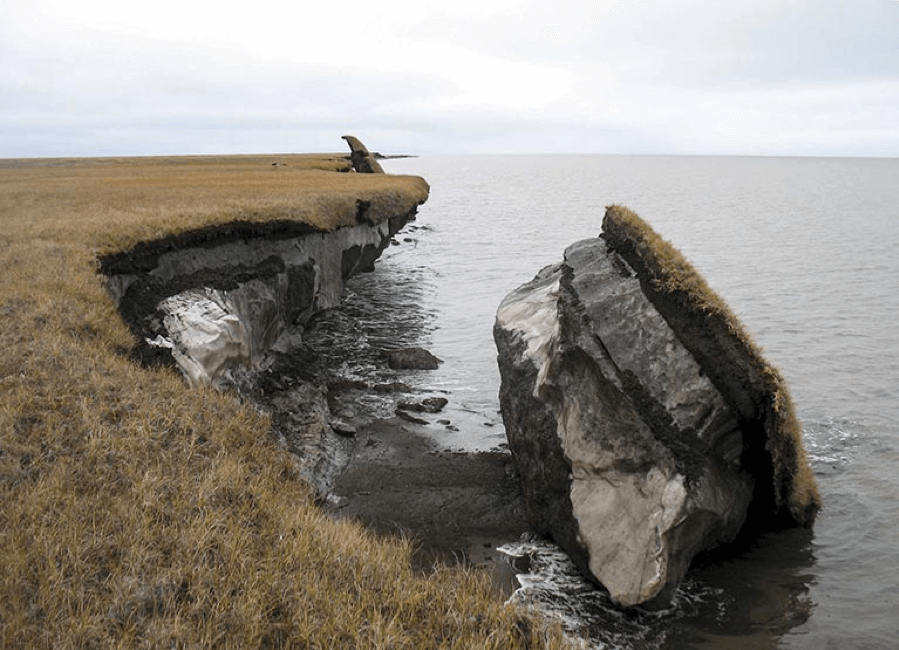What Is Permafrost?
Permafrost is any ground that remains completely frozen—32°F (0°C) or colder—for at least two years straight. These permanently frozen grounds are most common in regions with high mountains and in Earth’s higher latitudes—near the North and South Poles.
Permafrost covers large regions of the Earth. Almost a quarter of the land area in the Northern Hemisphere has permafrost underneath. Although the ground is frozen, permafrost regions are not always covered in snow.

Much of the Alaskan tundra is permafrost. The polygon shapes in the snow are a sign that this permafrost is thawing. Credit: NASA/JPL-Caltech/Charles Miller
What Is Permafrost Made Of?
Permafrost is made of a combination of soil, rocks and sand that are held together by ice. The soil and ice in permafrost stay frozen all year long.
Near the surface, permafrost soils also contain large quantities of organic carbon—a material leftover from dead plants that couldn’t decompose, or rot away, due to the cold. Lower permafrost layers contain soils made mostly of minerals.
A layer of soil on top of permafrost does not stay frozen all year. This layer, called the active layer, thaws during the warm summer months and freezes again in the fall. In colder regions, the ground rarely thaws—even in the summer. There, the active layer is very thin—only 4 to 6 inches (10 to 15 centimeters). In warmer permafrost regions, the active layer can be several meters thick.

The layers of permafrost. Photo credit: Benjamin Jones, USGS. Public domain (modified)
How Does Climate Change Affect Permafrost?
As Earth’s climate warms, the permafrost is thawing. That means the ice inside the permafrost melts, leaving behind water and soil.
Thawing permafrost can have dramatic impacts on our planet and the things living on it. For example:
- Many northern villages are built on permafrost. When permafrost is frozen, it’s harder than concrete. However, thawing permafrost can destroy houses, roads and other infrastructure.
- When permafrost is frozen, plant material in the soil—called organic carbon—can’t decompose, or rot away. As permafrost thaws, microbes begin decomposing this material. This process releases greenhouse gases like carbon dioxide and methane to the atmosphere.
- When permafrost thaws, so do ancient bacteria and viruses in the ice and soil. These newly-unfrozen microbes could make humans and animals very sick. Scientists have discovered microbes more than 400,000 years old in thawed permafrost.

A block of thawing permafrost that fell into the ocean on Alaska’s Arctic Coast. Credit: U.S. Geological Survey
Because of these dangers, scientists are closely monitoring Earth’s permafrost. Scientists use satellite observations from space to look at large regions of permafrost that would be difficult to study from the ground.
NASA’s Soil Moisture Active Passive, or SMAP, mission orbits Earth collecting information about moisture in the soil. It measures the amount of water in the top 2 inches (5 centimeters) of soil everywhere on Earth’s surface. It can also tell if the water within the soil is frozen or thawed. SMAP’s measurements will help scientists understand where and how quickly the permafrost is thawing.
Related NASA Missions

SMAP
Related Resources for Educators
Lesson Plan: Analyzing Sea Ice Extent in the Arctic and Antarctic












